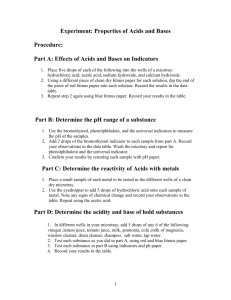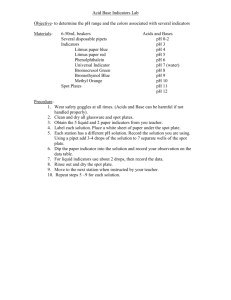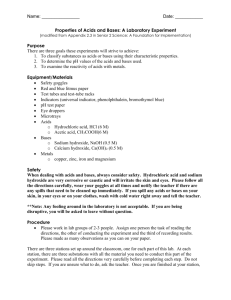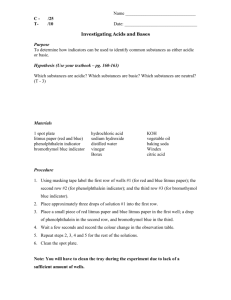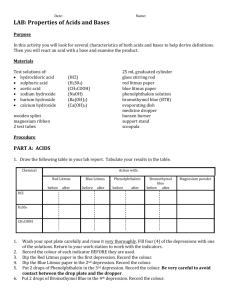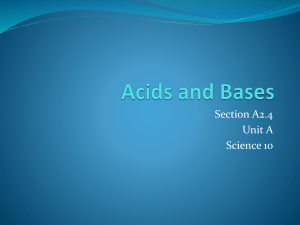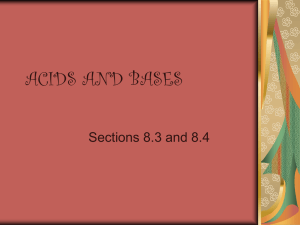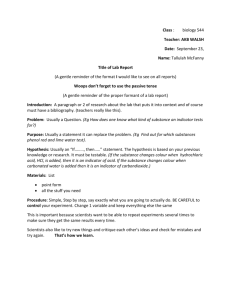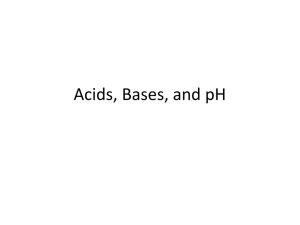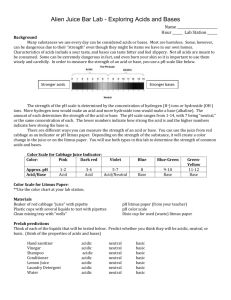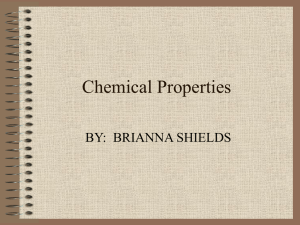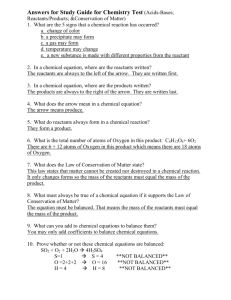Experiment 1: Properties of Acids
advertisement
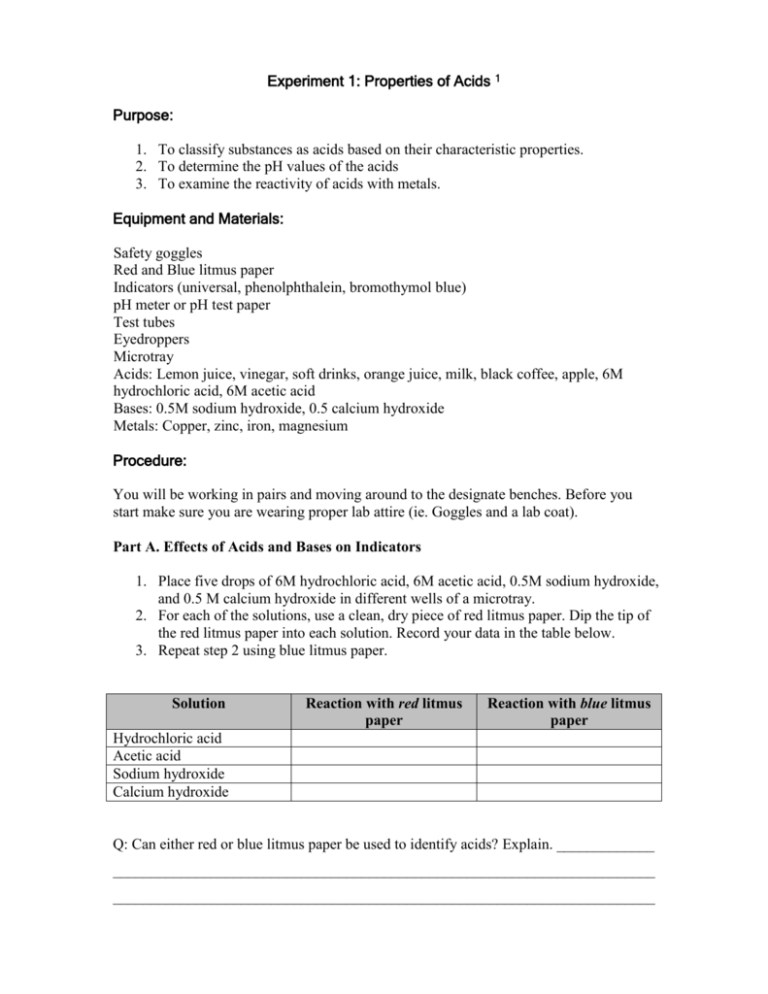
Experiment 1: Properties of Acids 1 Purpose: 1. To classify substances as acids based on their characteristic properties. 2. To determine the pH values of the acids 3. To examine the reactivity of acids with metals. Equipment and Materials: Safety goggles Red and Blue litmus paper Indicators (universal, phenolphthalein, bromothymol blue) pH meter or pH test paper Test tubes Eyedroppers Microtray Acids: Lemon juice, vinegar, soft drinks, orange juice, milk, black coffee, apple, 6M hydrochloric acid, 6M acetic acid Bases: 0.5M sodium hydroxide, 0.5 calcium hydroxide Metals: Copper, zinc, iron, magnesium Procedure: You will be working in pairs and moving around to the designate benches. Before you start make sure you are wearing proper lab attire (ie. Goggles and a lab coat). Part A. Effects of Acids and Bases on Indicators 1. Place five drops of 6M hydrochloric acid, 6M acetic acid, 0.5M sodium hydroxide, and 0.5 M calcium hydroxide in different wells of a microtray. 2. For each of the solutions, use a clean, dry piece of red litmus paper. Dip the tip of the red litmus paper into each solution. Record your data in the table below. 3. Repeat step 2 using blue litmus paper. Solution Reaction with red litmus paper Reaction with blue litmus paper Hydrochloric acid Acetic acid Sodium hydroxide Calcium hydroxide Q: Can either red or blue litmus paper be used to identify acids? Explain. _____________ ________________________________________________________________________ ________________________________________________________________________ Part B. Determine the pH Range of a Substance 1. Use the bromothymol blue, phenolphthalein, and universal indicators to measure the pH of the samples. 2. Add two drops of the bromothymol blue indicator to each sample from part A. Record your observations in the data table provided below. 3. Wash the microtray and repeat step 2for phenolphthalein and universal indicator. 4. Test each substance with pH paper or a pH meter. Record results. Solution Bromothymol Blue Phenolphthalein Universal Indicator pH paper Hydrochloric acid Acetic acid Sodium hydroxide Calcium hydroxide Q: How accurate are indicators for measuring pH? _______________________________ ________________________________________________________________________ ________________________________________________________________________ Part C. Determine the Reactivity of Acids with Metals 1. Place a small sample of each metal to be tested in the different wells of a clean, dry microtray. 2. Use and eyedropper to add five drops of the hydrochloric acid onto each sample of metal. Not any signs of chemical change and record your observations in a data table. Repeat using the acetic acid. Metal Reaction with hydrochloric acid Reaction with acetic acid Zinc Copper Iron Magnesium Q: What signs of chemical change were observed when acids were placed on metals? ________________________________________________________________________ ________________________________________________________________________ ________________________________________________________________________ Q: Did all metals react similarly? Explain. _____________________________________ ________________________________________________________________________ ________________________________________________________________________ Part D. Determine the Acidity of Household Substances 1. In different wells in your microtray, add five drops of the following substances: Lemon juice, vinegar, soft drinks, orange juice, milk, black coffee, and apple. 2. Test each substance as you did in Part A, using red and blue litmus paper. 3. Test each substance as you did in part B, using indicators and pH paper. 4. Record your results in the table below. Household sample Lemon juice Vinegar Soft drink Orange juice Milk Black coffee Apple Red litmus paper Blue litmus paper pH paper Bromothymol Blue Phenolphthalein Universal indicator Part E. Data Analysis 1. List the general properties of acids. Tests Red litmus Blue litmus pH paper Bromothymol Blue Phenolphthalein Universal Indicator Reaction with a metal Acid Properties 2. Write the name of the household substance on the pH scale. 1 Acid 1 7 Neutral Adapted Appendix 2.3 of the Senior 2, Cluster 2, Chemistry in Action science curriculum. 14 Base
